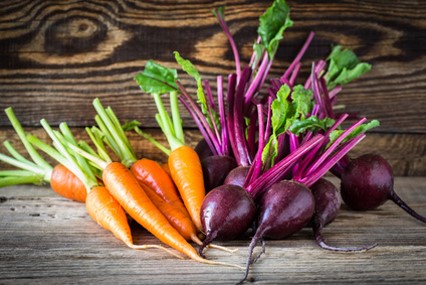What can acupuncture teach you about nutrition?
Nutrition and Society
As an acupuncturist, I look at the whole person. Since we are what we eat, the whole person also includes diet. I often help patients tweak their diet in order to make shifts and improve symptoms. I love nutrition and utilize it a lot, but where Western nutrition differs from other traditions is that it doesn’t consider the energy of food and how it impacts the body. This is where I start to combine Western style diets with Chinese nutrition theory. Here I will share foods that can help certain conditions, and I will also include Western nutritional diet plans that are great for making informed decisions about diet.
How does Chinese nutrition work?
Chinese nutrition uses food as medicine to balance yin and yang within the body (eventually, all imbalance and disharmony in Chinese medicine goes back to yin and yang). Nutrition is used to shift temperature, fluids, blood, or qi in order to stabilize them and work with the roots of a symptom. Because each body is so different, practitioners will develop diet plans and recommendations after diagnosing patients in order to address their specific needs. One common diagnosis, particularly in the US, is dampness.
What is Excess Dampness?
Many pathologies can occur when yin and yang are out of balance. Since yin and yang represent a balance of opposites, dryness and dampness in the body are looked at when acupuncturists make a diagnosis. Excess dampness is exactly what it sounds like. It is when the body has an accumulation of water or fluids such as edema or phlegm. This can show up in many organs and is a grimy, sludgy, sticky feeling. It can manifest as a slow metabolism and weight gain, ovarian cysts, or even as cloudy urine. From a Western standpoint, it can also be seen as plaque accumulation in the arteries and obesity from chronic inflammation. Chinese medicine aims to use foods that are drying and astringent to soak up and expel dampness. Also, foods which cause dampness should be avoided.
Foods that Impact Dampness
Foods that cause dampness are fried foods, beer, dairy, grains, poor quality fats and oils, and sugar. Dietary mainstays in the American diet are cheese, bread, low-quality meats, and refined sugars. It is no wonder obesity rates are so high. Americans eat a lot of damp and inflammation producing foods. So what are some dietary choices we can make to get rid of dampness? Foods with diuretic properties such as green tea, astringent foods like lemon, cherry, and rosemary, and most vegetables. I have instructed patients to try a whole fresh lemon squeezed into some room temperature water first thing in the morning. This helps clear out toxins from the liver, stimulate the metabolism, and cut through dampness.
Dietary Solutions
For patients with dampness issues, I recommend the Paleolithic diet. When done correctly, the paleo diet consists primarily of vegetables, most of which help regulate dampness in the body. People who eat with Paleolithic flare also avoid almost all damp producing foods such as dairy, grains (particularly white flour and processed grains), and fried foods with poor quality oils. The paleo diet also allows meat and seafood, of those duck, mackerel, anchovy, and turkey can be included to help further reduce excessive dampness in the body. Thanks for reading, and stay tuned for more about Chinese Nutrition!

